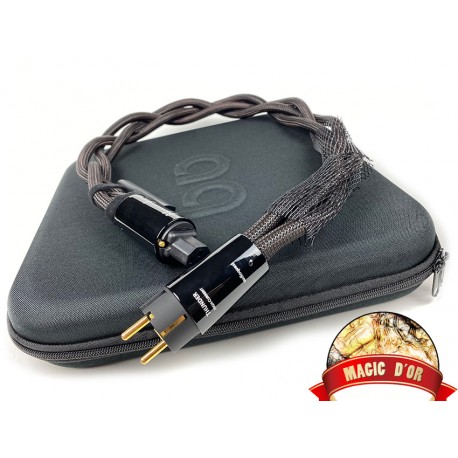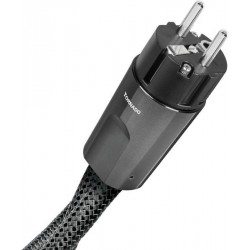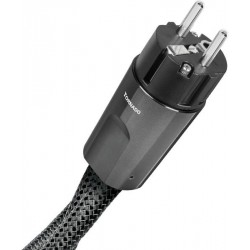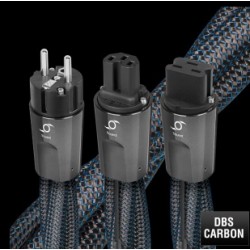No products
Prices are tax included
Alternating Current (AC), is a far-from-perfect power source. AC power technology is well over a century old and was never designed to meet the exacting standards of today’s high resolution audio-video components. AC noise is present at the utility source, and is then exacerbated by radio frequency noise that is induced (picked up by the AC power cord) and coupled to the component power supplies and to circuit ground. This creates distortion and low-level signal losses via the “masking effect.” Further, power amplifiers can require immense reserves of transient current for their power supplies to react to and then stabilize during dynamic audio passages. Most AC power cords and power conditioner-regenerators, though helpful to a point, are simply not up to the task.
Power amplifiers present a real challenge for any AC power source, as the transient current requirements (though short in duration) can be many times that of the average (RMS) current consumption. Power amplifiers are also unique from all other components in that the current drawis dynamic, not constant, and it changes with volume and audio signal content. Though many AC power cords may feature low DC resistance to allow for some of this requirement, the characteristic impedance of the AC cable is equally responsible for assuring uncompromised performance. Many premium AC cords constrict or compress the audio transient as their characteristic impedance restricts the transient current.
Ground-Noise Dissipation Technology
AC Ground wires provide protection from current-wiring faults, but they also act as antennas. Thus, they are subject to induced radio-frequency (RF) noise. This RF noise bypasses component power supplies and is typically coupled directly into a system’s most sensitive audio/video circuits. AudioQuest’s patented Ground-Noise Dissipation greatly reduces this distortion, yielding unprecedented levels of noise dissipation across the widest bandwidth (range) of radio frequencies possible. Our unique circuit topology utilizes a common-mode phase-cancelling array, in concert with proprietary dielectric materials which provide additional differential linear filtering. (US Patent # 9,373,439)
High Purity Conductors - Long-Grain Copper (LGC) and Perfect-Surface Copper (PSC)
A carefully finessed combination of solid high-purity Long-Grain Copper (LGC) and high-purity Perfect-Surface Copper (PSC) conductors prevent strand interaction, a major source of ear fatiguing transient intermodulation distortion. LGC allows a smoother and clearer sound than standard OFHC (Oxygen-Free-High-Conductivity) copper. The astonishingly smooth and pure Perfect-Surface Copper further eliminates harshness and greatly increases clarity compared to OFHC, OCC, 8N and other premium coppers.
Dielectric-Bias System with Radio Frequency Trap
All insulation between two or more conductors is also a dielectric whose properties will affect the integrity of the signal. When the dielectric is unbiased, dielectric-involvement (absorption and non-linear release of energy) causes different amounts of time delay (phase shift) for different frequencies and energy levels, which is a real problem for very time-sensitive multi-octave audio. The inclusion of an RF Trap (developed for AudioQuest’s Niagara Series of power products), ensures that radio frequency noise will not be induced into the signal conductors from the DBS field elements. (DBS, US Pat #s 7,126,055 & 7,872,195 B1)
Uncompressed High (Variable) Current Transfer - Thunder
With current capacity of 20 amps RMS @ 125VAC 50/60Hz (16 amps RMS @ 220-240VA 50/60Hz), Thunder/High (Variable) Current can withstand current transient peaks many times its continuous (average) RMS rating. This makes Thunder/High (Variable) Current ideally suited for a wide assortment of AC power conditioners, power regenerators, AC isolation transformers, and AC battery back-up devices, as well as any power amplifier, powered subwoofer, powered loudspeaker, powered receiver, or integrated amplifier.
Directionality
All drawn metal strands or conductors have a non-symmetrical, and therefore directional, grain structure. AudioQuest controls the resulting RF impedance variation so that noise is drained away from where it will cause distortion. The correct direction is determined by listening to every batch of metal conductors used in every AudioQuest audio cable. When applicable, arrows are clearly marked on the connectors to ensure superior sound quality. For most models of AQ cable, the arrows not only indicate the direction that optimizes metal-directionality as part of Noise-Dissipation, but also indicates non-symmetrical attachment of shield and GND in order to optimize full-system performance.
Metal: 66% Rigid LGC Copper & 34% Rigid PSC Copper
Caliber: 2x 4.17 mm2 (current on demand) / 1x 3.31 mm2 (safety / earth)
Technology:
Characteristic impedance zero (50 Hz - 1 MHz)
Noise noise dissipation
72V polarized dielectric system
Sheath: Brown / black braid
Terminations: "Hanging Gold" plating on purple copper








